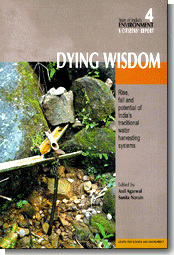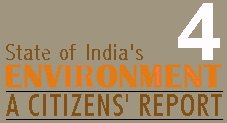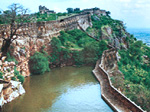 
JAISALMER CHERRAPUNJI |
 
JAISALMER CHERRAPUNJI |
After canals, politician-friendly big dams and other cement monsters, let us understand all over again the ways of managing water. Dying Wisdom
Harvest what? What did the post-1947 national school of water management
teach? So Dying Wisdom looks at a millennial tradition to find answers to today’s irrigation and drinking water crises. That far back? But isn’t the Arthasastra about
administration? In fact, Dying Wisdom looks into India’s 15 ecological zones, each with its localised systems. An awesome variety. A trove of technology. Rain is decentralised. So is the demand for water. Dying Wisdom argues for a revival of local water harvesting systems. |
||
 |
 |
 |
| the book, drop by
drop... CHAPTER 1 Traditional Water Harvesting: A Multi-millennial Mission * Water has been harvested since antiquity, a tradition sustaining human growth and survival over millennia.This chapter finds such evidence in ancient texts, inscriptions, and archaeological remains. CHAPTER 2 Traditional Water Harvesting Systems: A Trove of Technology and Traditions * This chapter is divided into 15 sections. Each describes the systems of a particular ecological region of the country. Water harvesting clearly emerges as an expert response to local community needs and micro-ecology. CHAPTER 3 From Community Control to State Supremacy: The Rise and Fall of Water Harvesting * Indian villages were relatively autonomous. Customs and institutions existed to allocate water and maintain systems. Water harvesting generated its own surplus. The British administration destroyed this financial base, hence the local capacity to manage natural resources. CHAPTER 4 Water harvesting: Waiting for Wisdom to Make its Way * Local water harvesting systems possess great potential, given India’s irrigation and drinking water needs. The chapter also records attempts being made to revive local systems and reviews attendant problems. A Statement of Shared Concern recommends strategies for the revival of local harvesting systems. |
 |
CENTRE FOR SCIENCE AND
ENVIRONMENT
41, Tughlakabad Institutional Area, New
Delhi-110062 INDIA
Tel: 6081110, 6081124, 6083394, 6086399 Fax: 91-11-6085879
Email: cse@cseindia.org
Copyright © CSE Centre for Science and Environment